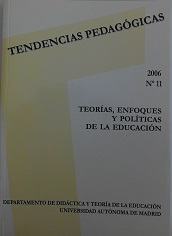Palabras clave:
E-learning, nuevas tecnologías para la formación, criterios de eficacia.Resumen
Para que haya una mínima garantía de éxito en el desarrollo de la enseñanza e-learning es necesario un cierto equilibrio de calidad entre los tres elementos en que se fundamenta esta modalidad de formación: la herramienta para la formación (la plataforma), los contenidos y la infraestructura necesaria. Una buena plataforma con contenidos deficientes convierten el sistema en ineficiente y, viceversa, magníficos contenidos en una plataforma inmanejable implica que el sistema adquiere la valoración del componente peor. Lo mismo podría decirse de la infraestructura de gestión ya que incide en el sistema de una manera trascendental. El objetivo de este documento es proporcionar una serie de criterios que consideramos esenciales al ahora de valorar el funcionamiento de una plataforma formativa. Además, se aportan una serie de recomendaciones básicas que podría ayudar a mejorar las funcionalidades de una plataforma en desarrollo.
Descargas
Citas
Área, M. (2002): Educar en la sociedad de la información. Bilbao, Desclée de Brower.
Comisión de las Comunidades Europeas (2000): Concebir la educación del futuro. Promover la innovación con las nuevas tecnologías. Informe de la Comisión al
Consejo y al Parlamento Europeo. (En línea)(http://europa.eu.int/comm/education/index_en.html)
(24/04/05).
Crook, Ch. (1998): Ordenadores y aprendizaje colaborativo. Madrid, Morata.
Duggleby, J., (2001). El Tutor Online. Barcelona: Deusto.
Feyten, C. y Nutta, J. (1999): Virtual instruction. Englewood, Unlimited.
Garrison, D. R. y Anderson, T. (2003). E-Learning in the 21th Century. A Framework for Research and Practice. New York: Taylor and Francis.
Gil, P. (2001). E-Formación. Bilbao: Ediciones Deusto.
Gisbert, M. y otros (1997): Entornos de Formación Presencial-Virtual y a Distancia. (En línea) http://www.rediris.es/rediris/boletin/40/enfoquel.html (Consulta: 01/04/05).
González, J. y Gaudioso, L. (2001). Aprender y Formar en Internet. Madrid: Paraninfo.
Lorés, J. (Ed.) (2002). La Interacción Persona-Ordenador. Lleida: AIPO.
Majo, J. y Marqués, P. (2002): La revolución educativa en la era Internet. Barcelona, Cisspraxis.
Nielsen, J. (2002). Usabilidad. Diseño de Sitios Web. Madrid: Pearson Educación.
Ruipérez, G. (2003). Educación Virtual y E-Learning. Madrid: Auna.
Salinas, J. (1998): Redes y educación: tendencias en educación flexible y a distancia (En línea) http://editor.edutec.rediris.es/documentos/1998/tendencias.html (Consulta: 24/04/05)
Taylor, J. (2001). The future of learning - learning for the future. Proceedings of the 20th ICDE World Congress.http://www.fernuni-hagen.de/ICDE/D200 l/final/keynote_speeches/wednesday/taylor_keynote.pdf
The VCLA Internet Report (2001). Surveying the Digital Future. Year two. VCLA Centre for Communication Policy. http://www.ccp.ucla.edu.
Vizcarro, C. y León, J. A. (1998). Introducción al papel de las nuevas tecnologías en la enseñanza y el aprendizaje. En C. Vizcarro y J. A. León (Eds.), Nuevas Tecnologías
para el Aprendizaje. Madrid: Pirámide.
